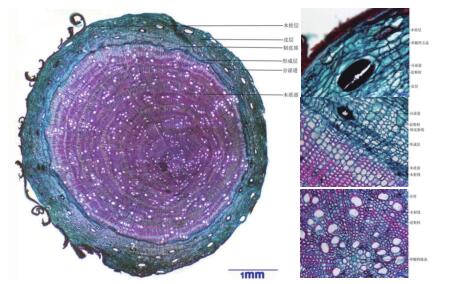Zheng Lihui, Xia Junfeng, Huang Lei, Hu Min, Xiao Ling, Wang Bo, Xu Ling
Objective: To evaluate comprehensively the quality of Begonia evasiana, Begonia sinensis, Begonia pedatifida, Begonia smithiana and Begonia henryi by using UPLC-Q-TOF-MS technology conbined with chemometric. Methods: Chromatographic separations were conducted on a ACQUITY UPLC HSS T3 C18 column (2.1 mm×100 mm, 1.8 μm) with acetonitrile-0.1% aqueous formic acid as mobile phase by gradient elution. The column temperature was 30 ℃, the fl ow rate was 0.2 mL·min-1, and the detection wavelength was 254 nm. The positive and negative ions were scanned simultaneously by the electric spray ion source (ESI), and collected in MSE mode. The UPLC/Q-TOF-MS characteristic maps of five kinds of Begonia medicinal materials were established, their common peaks were confi rmed and assigned, principal component analysis (PCA) and partial least squares discriminant analysis (PLS-DA) were used to analyze the data statistically. Results: The common characteristic peaks were 15, 13, 12, 12 and 15 for Begonia evasiana, Begonia sinensis, Begonia pedatifida, Begonia smithiana and Begonia henryi, respectively, and a total of 29 compounds were identifi ed. There were signifi cant diff erences in the quality of the fi ve medicinal herbs of the genus Begonia, among which the chemical composition differences between the Begonia henryi and the other four medicinal herbs were significant. The chemical composition diff erences between the Begonia evasiana and Begonia sinensis were relatively small, and the chemical composition differences between the Begonia pedatifida and Begonia smithiana were relatively small. 8 chemical markers that contributed significantly to the differentiation of the five medicinal materials were also screened, including proanthocyanidin B2, epicatechin, cucurbitacin D or its isomers, cucurbitacin D glucoside, and cucurbitacin B as potential identifi cation characteristic chemical markers, while proanthocyanidin B1, catechins, and rutin were potential content diff erential chemical markers. Conclusion: The method directly and accurately refl ects the overall quality and chemical composition diff erences of these fi ve medicinal materials, and has important guiding significance for establishing scientific and reasonable quality evaluation methods and safe drug use of the genus Begonia medicinal materials, and also provides references for the overall quality evaluation and control and standard revision of begonia.
